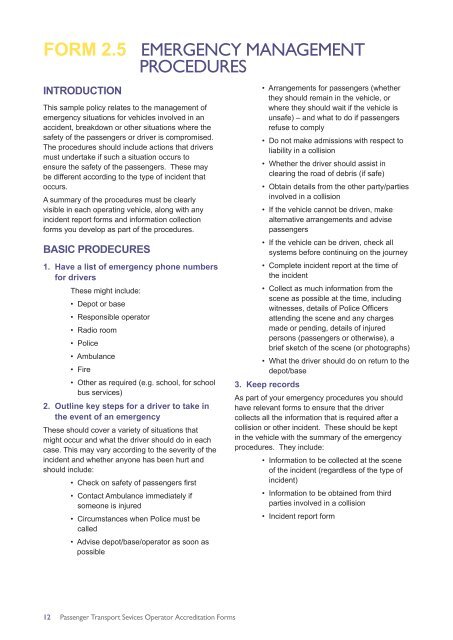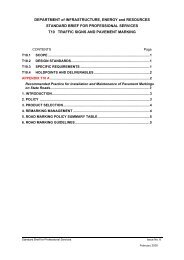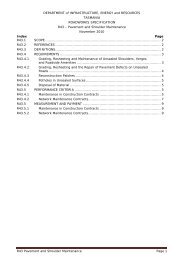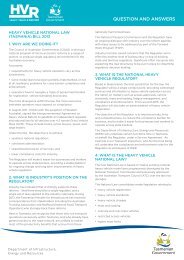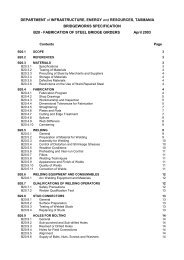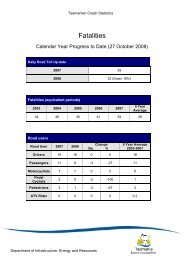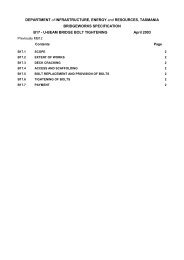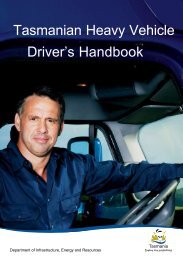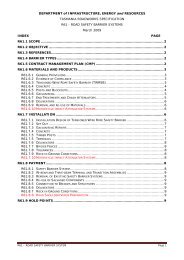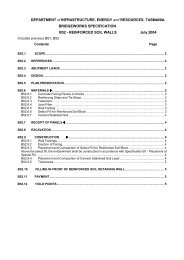Operator Accreditation Manual - Forms - Transport
Operator Accreditation Manual - Forms - Transport
Operator Accreditation Manual - Forms - Transport
Create successful ePaper yourself
Turn your PDF publications into a flip-book with our unique Google optimized e-Paper software.
FORM 2.5 EMERGENCY MANAGEMENT<br />
PROCEDURES<br />
INTRODUCTION<br />
This sample policy relates to the management of<br />
emergency situations for vehicles involved in an<br />
accident, breakdown or other situations where the<br />
safety of the passengers or driver is compromised.<br />
The procedures should include actions that drivers<br />
must undertake if such a situation occurs to<br />
ensure the safety of the passengers. These may<br />
be different according to the type of incident that<br />
occurs.<br />
A summary of the procedures must be clearly<br />
visible in each operating vehicle, along with any<br />
incident report forms and information collection<br />
forms you develop as part of the procedures.<br />
BASIC PRODECURES<br />
1. Have a list of emergency phone numbers<br />
for drivers<br />
These might include:<br />
• Depot or base<br />
• Responsible operator<br />
• Radio room<br />
• Police<br />
• Ambulance<br />
• Fire<br />
• Other as required (e.g. school, for school<br />
bus services)<br />
2. Outline key steps for a driver to take in<br />
the event of an emergency<br />
These should cover a variety of situations that<br />
might occur and what the driver should do in each<br />
case. This may vary according to the severity of the<br />
incident and whether anyone has been hurt and<br />
should include:<br />
• Check on safety of passengers first<br />
• Contact Ambulance immediately if<br />
someone is injured<br />
• Circumstances when Police must be<br />
called<br />
• Advise depot/base/operator as soon as<br />
possible<br />
• Arrangements for passengers (whether<br />
they should remain in the vehicle, or<br />
where they should wait if the vehicle is<br />
unsafe) – and what to do if passengers<br />
refuse to comply<br />
• Do not make admissions with respect to<br />
liability in a collision<br />
• Whether the driver should assist in<br />
clearing the road of debris (if safe)<br />
• Obtain details from the other party/parties<br />
involved in a collision<br />
• If the vehicle cannot be driven, make<br />
alternative arrangements and advise<br />
passengers<br />
• If the vehicle can be driven, check all<br />
systems before continuing on the journey<br />
• Complete incident report at the time of<br />
the incident<br />
• Collect as much information from the<br />
scene as possible at the time, including<br />
witnesses, details of Police Officers<br />
attending the scene and any charges<br />
made or pending, details of injured<br />
persons (passengers or otherwise), a<br />
brief sketch of the scene (or photographs)<br />
• What the driver should do on return to the<br />
depot/base<br />
3. Keep records<br />
As part of your emergency procedures you should<br />
have relevant forms to ensure that the driver<br />
collects all the information that is required after a<br />
collision or other incident. These should be kept<br />
in the vehicle with the summary of the emergency<br />
procedures. They include:<br />
• Information to be collected at the scene<br />
of the incident (regardless of the type of<br />
incident)<br />
• Information to be obtained from third<br />
parties involved in a collision<br />
• Incident report form<br />
12 Passenger <strong>Transport</strong> Sevices <strong>Operator</strong> <strong>Accreditation</strong> <strong>Forms</strong>


